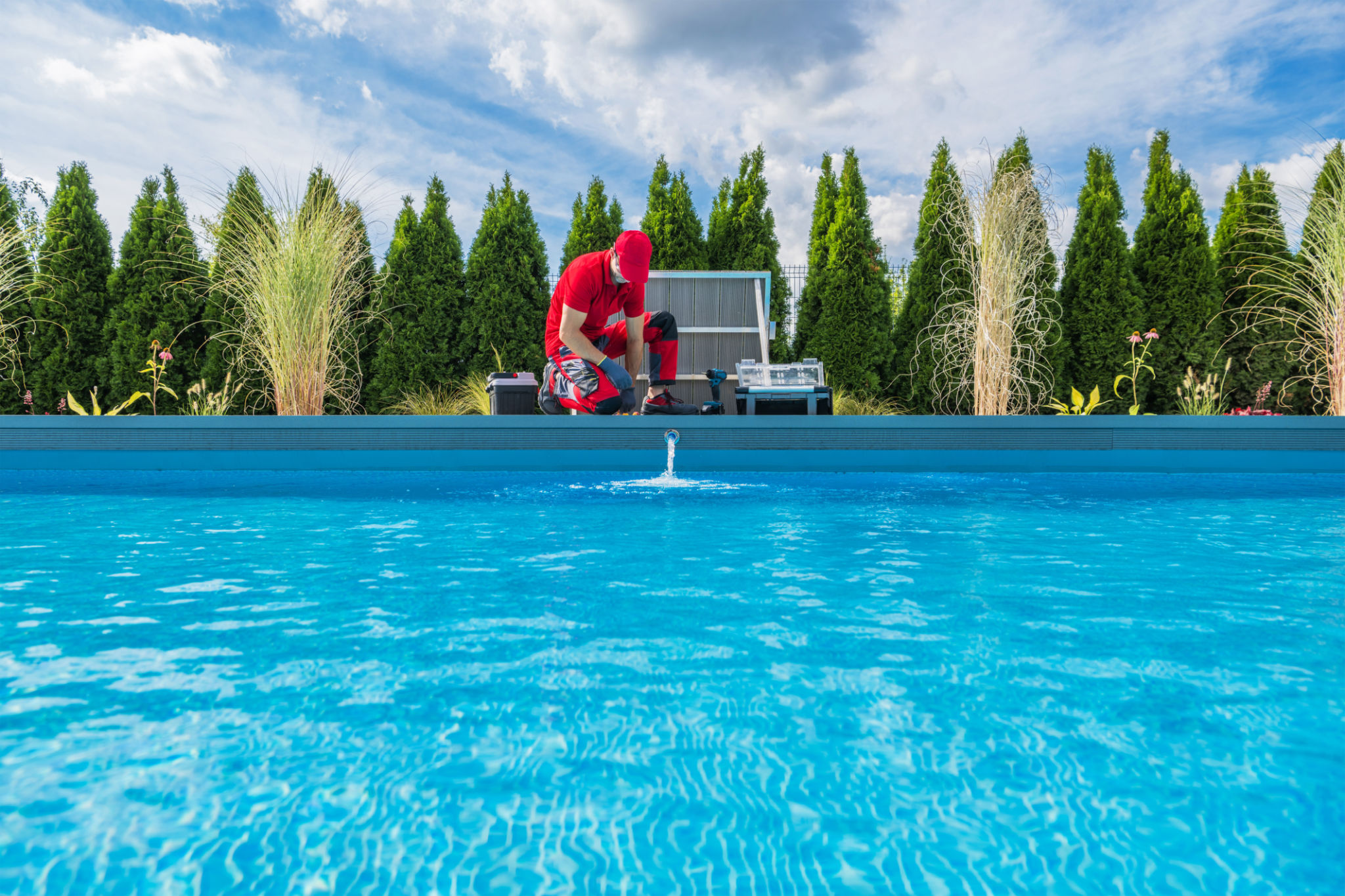Understanding Pool Water Chemistry: A Comprehensive Guide
Introduction to Pool Water Chemistry
Maintaining a clean and safe swimming pool is not just about regular cleaning; understanding pool water chemistry is crucial. Proper water chemistry ensures that your pool is free of harmful bacteria, algae, and other contaminants that can affect both the pool's structure and the health of its users. In this guide, we will explore the essential elements of pool water chemistry and how to balance them effectively.

The Basics of Pool Water Chemistry
Pool water chemistry revolves around three main components: pH levels, alkalinity, and sanitizer levels. Each of these elements plays a significant role in maintaining a healthy swimming environment. pH levels indicate how acidic or basic the water is, with an ideal range of 7.2 to 7.8. Proper pH levels help protect swimmers' skin and eyes, as well as the pool equipment.
Alkalinity acts as a buffer for pH levels, helping to stabilize them and prevent fluctuations. The recommended alkalinity range is 80 to 120 ppm (parts per million). Lastly, sanitizer levels, often maintained with chlorine or bromine, are essential for killing bacteria and other harmful organisms in the water.

Testing and Balancing Your Pool Water
Regular testing of your pool water is necessary to ensure all chemical levels are within the recommended ranges. This can be done using test strips or a liquid test kit. When testing, it's important to check pH, alkalinity, and sanitizer levels at least once a week during the swimming season.
If any of these levels are off balance, adjustments are needed. For instance, if pH levels are too high, adding a pH reducer like muriatic acid can bring it back into range. On the other hand, if alkalinity is low, adding baking soda can help increase it. Always follow product instructions carefully when adjusting chemical levels.
Understanding Calcium Hardness
Calcium hardness refers to the concentration of calcium ions in your pool water. Maintaining the right level of calcium hardness is crucial to prevent scaling (when calcium deposits form on pool surfaces) or corrosion (when water leaches calcium from surfaces). The ideal range for calcium hardness is 200 to 400 ppm.

If calcium hardness is too low, you can increase it by adding a calcium hardness increaser. Conversely, if it is too high, you may need to dilute your pool water by partially draining and refilling it with fresh water. Regular monitoring helps keep these levels in check.
Cyanuric Acid and Stabilizer Levels
Cyanuric acid plays a vital role in protecting chlorine from being broken down by sunlight. It acts as a stabilizer, ensuring that chlorine remains effective in sanitizing your pool. The ideal cyanuric acid level is between 30 to 50 ppm. Too much cyanuric acid can hinder chlorine's effectiveness, so it's important to maintain a balanced level.
If levels are too high, dilution may be necessary. Keeping an eye on stabilizer levels helps maintain the efficiency of your sanitizers and ensures your pool remains safe for swimmers.

Conclusion
Understanding and managing pool water chemistry is vital for maintaining a clean and safe swimming environment. By regularly testing and adjusting pH, alkalinity, sanitizer, calcium hardness, and stabilizer levels, you can enjoy a pristine pool all season long. Remember that consistent monitoring and maintenance are key to preventing issues before they arise.
Whether you're a seasoned pool owner or a new one, having a grasp on these fundamentals will help you keep your pool in top condition, ensuring a refreshing and healthy swim for everyone.
